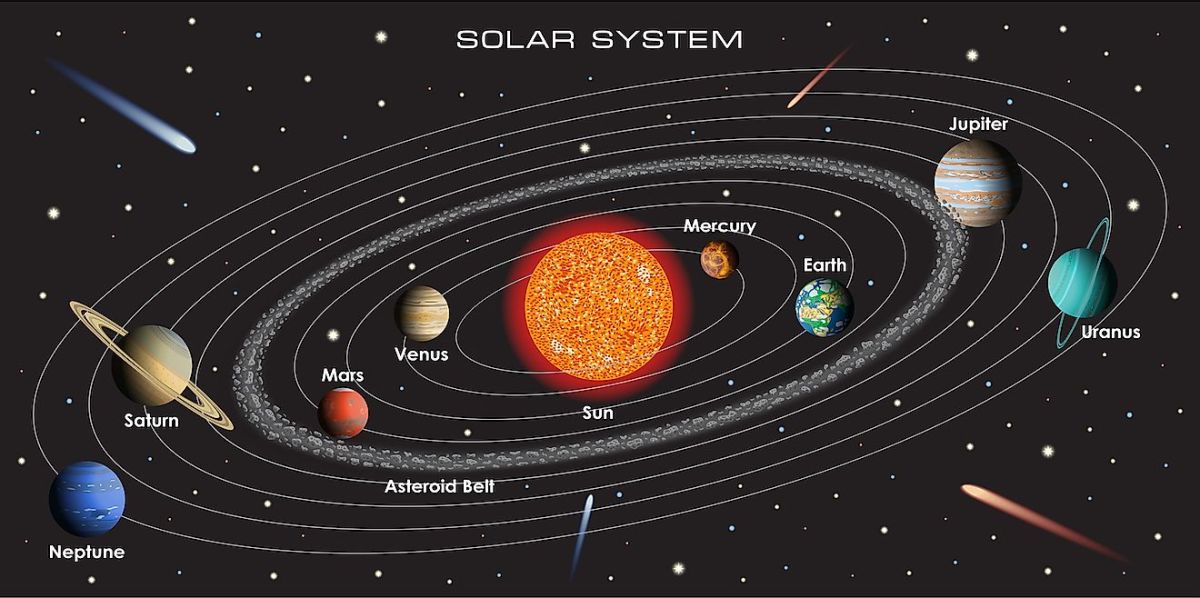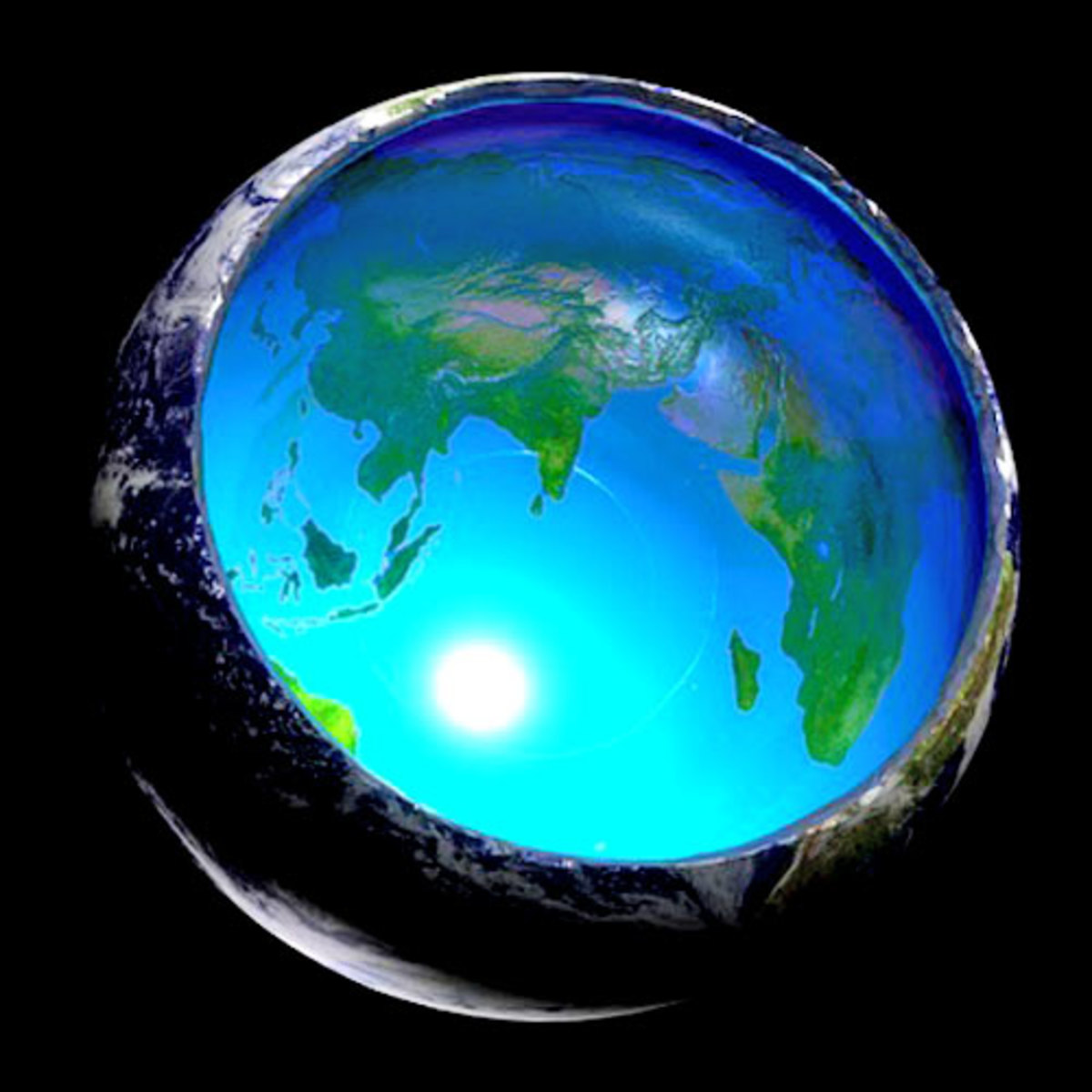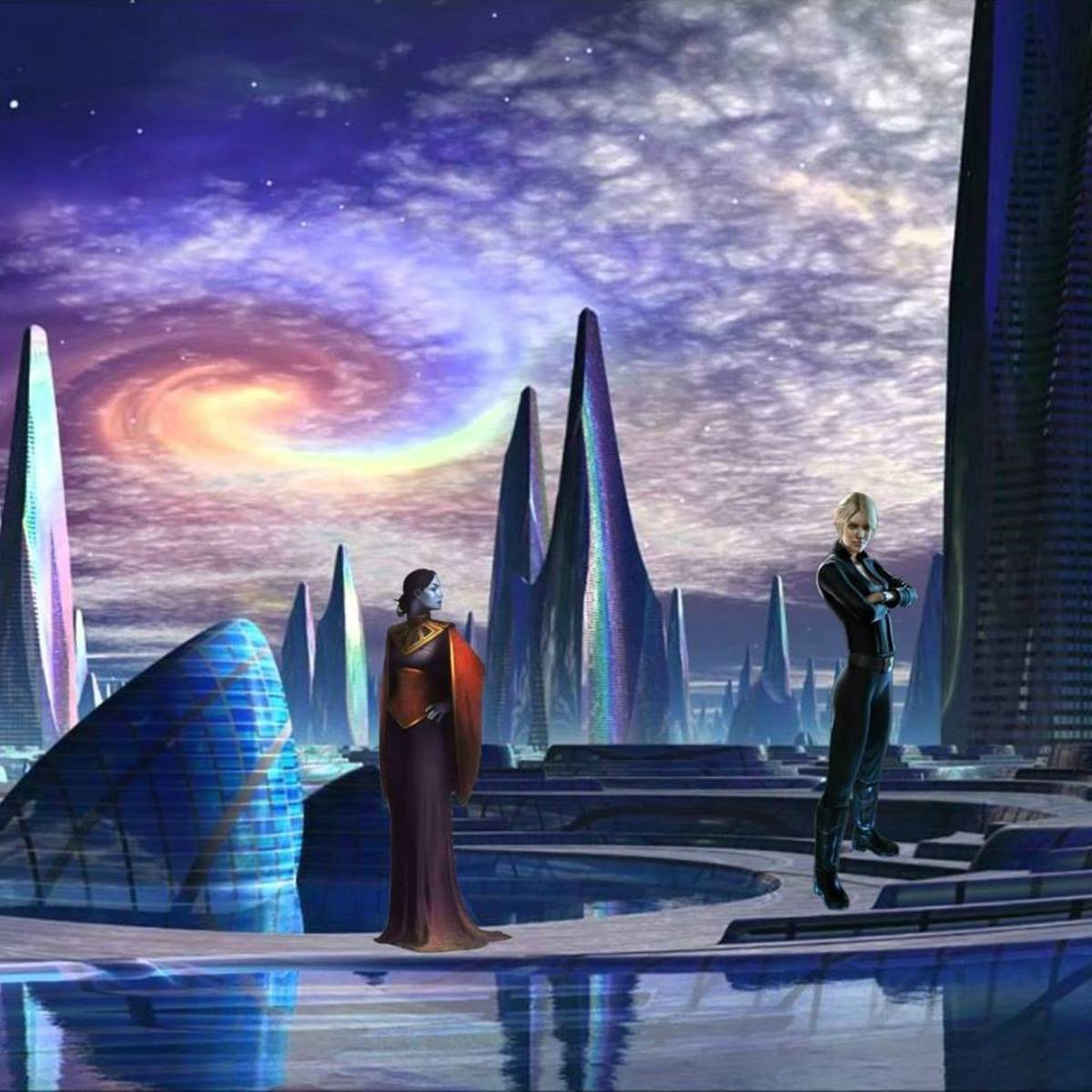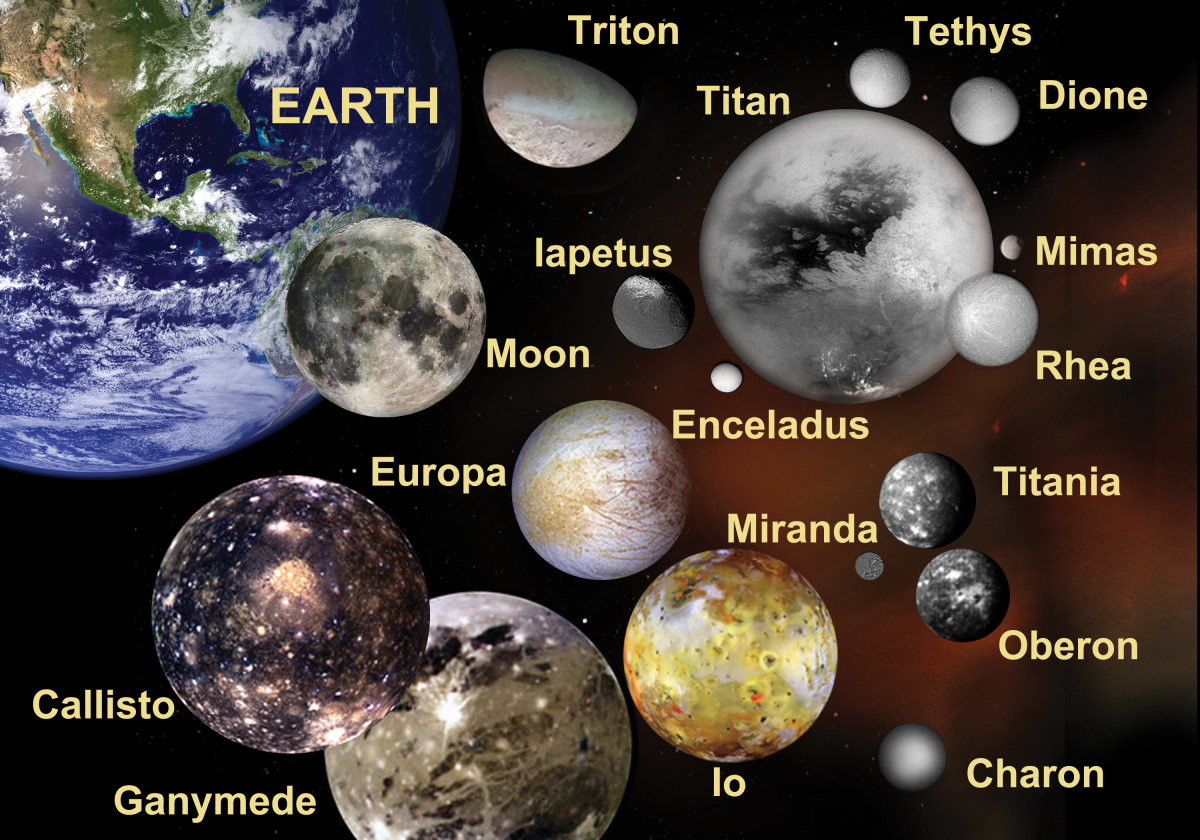The Solar System
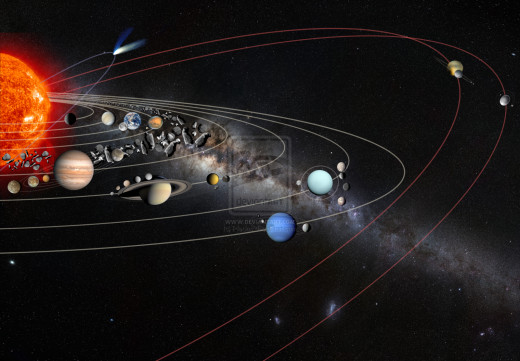
Introduction
The solar system is an interplanetary system containing the Sun, planets (including Earth), moons, asteroids and other non-planetary bodies. The solar system is located along one of the outer arms of the Milky Way.
With the sun being at the center of the solar system and the primary source of light to the planets and other bodies which surround it, the solar system consists of 8 planets and their natural satellites, 5 dwarf planets, the asteroid belt, comets and other stellar objects (including those in the trans-Neptunian belt).
With the exception of Pluto, all planets (and most dwarf planets) are known to revolve around the Sun in a near circular orbit and in a 'flattish' manner along the elliptical plane.
The discovery or the assertion of the solar system's existence can be first traced back to Nicolaus Copernicus in the 16th century who's known to have developed a mathematically predictive model. The acceptance of a heliocentric system than a geocentric system was then established by 17th century astronomers such as Galileo, Newton and Johannes Kepler.
While 6 planets were known to humanity for a fair amount of the 2nd millennium, the invention of telescopes after the 17th century paved the way for the discovery of planets beyond Saturn and studies even today (including discovery of newer dwarf planets and the trans-Neptunian belt) continue to explore the outer reaches of the system.
THE SUN
The Sun is the only star present within the solar system and is located at its center. Formed roughly 4 billion years ago, the Sun is considered a middle-aged star still said to be in the prime of its life. As the Sun is still young compared to some other stars which exist in the Universe, its core has heavier metals as against the older stars and it is this concentration of heavier metals that could be responsible for the formation of planets (especially the inner planets up til Mars which include a heavy content of Metal in their cores).
The Sun also has enough hydrogen and helium in its core to sustain constant nuclear fission for at least another 3 billion years - its constant emission of 400-700 nano-meters of the visible spectrum of light helps the Earth get enough light to sustain life.
At the end of its life, the Sun is expected to begin expanding in size and swallow out the inner planets (including Earth) before collapsing into a white dwarf star - it won't explode supernova as it is not heavy enough.
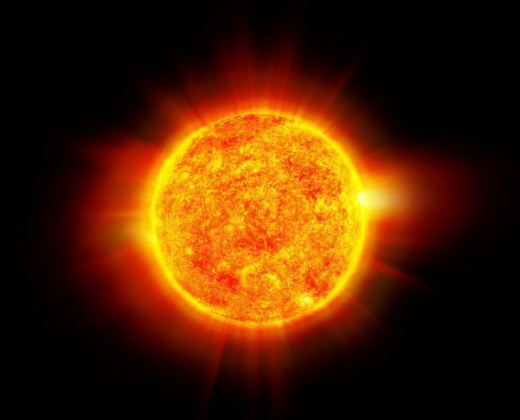
Mercury
The inner most planet of the solar system and the closest to the Sun, Mercury is the smallest planet out of the 8. Due to its extremely close proximity to the Sun (around 69 million kilometers or 0.46 A.U) and almost no atmosphere, the Mercurial surface experiences extreme heat and extreme cold (depending on which side faces the Sun). The poles are usually cold and the surface is unable to support biological life of any kind.
Mercury revolves around the Sun in around 88 days while it rotates around its axis in a slow 118 days (probably due to the strong gravitational forces of the sun). The Mercurial axis also has almost no tilt
Mercury does not have any natural satellites and has been named after the Roman messenger God bearing the same name (probably due to its fast-paced revolution around the Sun).
From Earth, you can spot Mercury during the morning or evenings albeit as a faint planet due to its proximity to the Sun.
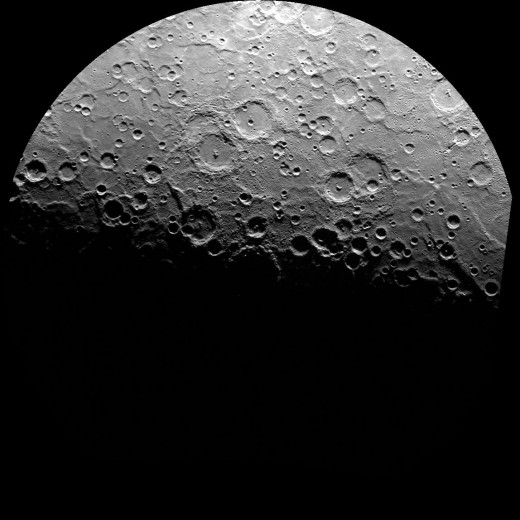
Venus
Located at a distance of roughly 109 Million kilometers (0.7 A.U.) from the Sun, Venus is the 2nd planet in the Solar System and is also known as 'Earth's twin' due to its similar size, atmospheric density and surface composition (Like Earth, its mantle has metals and silicates).
But despite these similarities, Venus and Earth are different in many other measures. The Venusian surface is often rocked by volcanic eruptions and the surface temperature often reaches 400 degrees Celsius (it is the hottest planet out of all - even hotter than Mercury). The Venusian atmosphere's also heavily laden with Carbon di-Oxide and almost no heat is usually able to escape the surface due to this greenhouse effect. Due to this, Venus cannot support any life.
Venus is also one of the only two planets which rotates retrograde (the other being Uranus) and has the slowest rotational periods of all planets - its sidereal day lasts for 243 days as against its year lasting roughly 225 Earth days.
Venus is not known to have any natural satellites but it does keep up a quasi-relationship with a small asteroid.
Lastly, Venus is also among the brightest planets visible from Earth usually as a 'morning' or 'evening' star (depending on season)
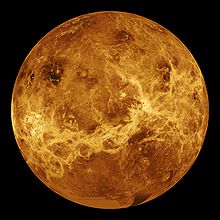
Earth
Our home world, the 3rd inner/terrestrial planet and the only one to harbor biological life as we know it, Earth is located roughly 149,000,000 km (or 1 Astronomical Unit) from the Sun and is the only one which has over 20% free oxygen. It is the largest among the 4 terrestrial planets and the only one showing plate-tectonics.
Earth has many contrasting and dynamic physical features with the deepest parts of the ocean reaching over 10 kilometers (at the Mariana Trench in the West Pacific Ocean) and the highest point reaching almost 9 kilometers high (at the summit of Mt Everest).
The first signs of biological life on Earth have said to have begun roughly in the 'Pre-Cambrian' era (about 3.6 billion years ago) with single-celled organisms evolving under water. As the oceans gave way to formation of land-masses, life began to evolve of land including both flora and fauna.
Modern humans have only been known to walk the Earth no earlier than 100,000 years ago (evolving from apes) and are now the dominant life-form on the planet.
The Earth's still made up of 60-70% water and the presence of water and oxygen with an adequate distance from the sun is what has been responsible for dynamic life-harboring conditions on the planet.
The Earth's axial tilt is at an inclination of 23 degrees, which allows for distinct seasonal variations and while a sidereal day lasts 24 hours, a complete revolution around the Sun occurs in 365 days.
The Earth is also the only planet not named after a God and has one natural satellite (The Moon), which is also the largest natural satellite among the inner planets. Humans (led by American astronomer Neil Armstrong) have already set foot on the moon once in 1969 by way of NASA's Moon landing mission and according to recent reports from NASA and other sources of media, the moon's tipped to become a prime destination for commercial space-flights in future.
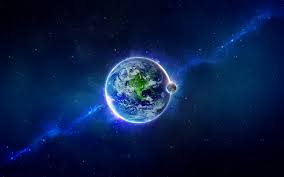
Mars
Mars (Named after the Roman God of War) is the fourth and the most distant terrestrial planet in the Solar System. It is 80% of Earth's mass and owes its red color to heavy content of Iron Oxide in its soil.
Despite containing a thin atmosphere compared to Earth standards, Mars still has shown evidence of seasonal variations on its surface and shares many of Earth's physical characteristics including deserts, valleys, craters, mountain ranges and polar ice-caps. Many prominent features exist on Mars - such as Olympus Mons, which is the highest mountain range (and volcano) across the solar system (It's peaks reaching as high as 27 KILOMETERS and the base stretching out to almost 500 km).
Mars revolves around the Sun in roughly 689 days (owing to its longer distance from the Sun i.e. 1.6 AU) while it rotates about its axis (tilted at 25 degrees) in a little over 24 hours.
Increased exploration of the Martian surface has also lead to study of the existence of water on Mars and the theory that microscopic life might have once existed on the planet.
No other planet across the solar system has been the focus of more scientific study or enjoyed more fanfare in popular culture than the 'red planet' and a manned space-mission to Mars is extremely likely in the 21st century.
Lastly, Mars has two confirmed natural satellites, Phobos and Deimos.
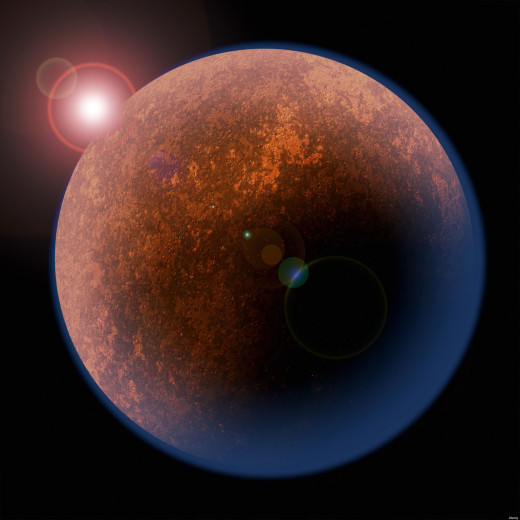
Ceres
The asteroid belt is a continuous elliptical formation of rocky bodies which revolve around the Sun between the orbits of Mars and Jupiter. Asteroids vary in size - some stretching 100's of kilometers in diameter to almost microscopic.
Astronomers have for a long time suggested that asteroids are nothing but remnants of the formation of the solar-system but could never come together as a planet largely due to Jupiter's gravitational pull.
The largest of the asteroids is the dwarf planet, Ceres (which was classified as a dwarf planet in 2006). Ceres was named after the Roman Goddess of agriculture - Ceres is also the only 'dwarf planet' in the inner solar system (the other dwarf planets situated beyond Neptune)
Ceres (located roughly 2.7 AU from the Sun) has a diameter of around 1000 km and possesses its own gravitational field (enough to mould itself into a spherical shape). Like many other asteroids, Ceres is composed of rock and ice in its surface and some evidence of unstable water has been found too (leading to hypothesis that bacterial life may exist there). The Ceresian temperature (despite Ceres's distance from the Sun) is also unusually warm, with surface temperatures in daylight reaching 36-38 degrees.
Not much is known in further detail about Ceres and NASA have sent an unmanned space probe for further study - The probe is expected to arrive at Ceres in 2015.
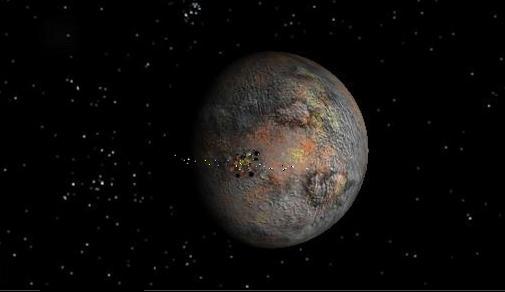
Jupiter
The largest of all planets and the first among the outer planets (at almost 5 AU from the Sun) Jupiter is as remarkable as it can get. Big enough to hold roughly 1,300 Earths, its gravitational pull is felt across the 8 planets and even the Sun.
Made up of mostly Hydrogen and Helium, it is also the first gas-giant (i.e. the absence of a solid metallic surface beyond the planet's core) among the outer or Jovian planets.
The mass of Jupiter in fact is so heavy that it weighs roughly 2.5 times all the other planets put together.
Despite its gigantic size, Jupiter spins rapidly about its axis (Roughly 10 hours) while it completes one revolution around the sun in roughly 11 Earth years.
Jupiter has some many unique features on its surface (largely due to a high amount of internal heat) - The most prominent Jovian feature being the 'Great Red Spot', a persistent but stable anticyclonic storm which is roughly in Jovian tropical southern hemisphere. The spot is actually larger than the size of Earth and has now been accepted as a permanent feature of the planet.
Jupiter's named after the Roman King of the Gods (and the God of Thunder) and enjoys astrological significance in many cultures.
Currently, Jupiter has 67 discovered natural satellites with Ganymede, Io, Callisto and Europa being the biggest (with Europa having signs it has watery ice-caps and atmospheric conditions which might make it capable of harbouring bacterial life).
Ganymede is larger than Mercury and is also the largest natural satellite across the solar system.
From Earth, Jupiter's brightness is usually 3rd after the Moon and Venus and can easily be seen by the naked eye.
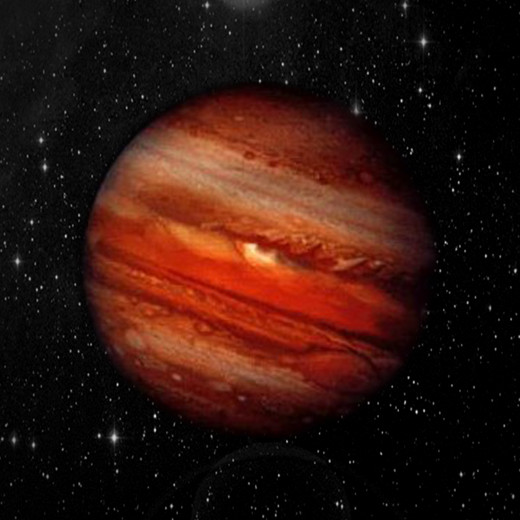
Saturn
The 2nd biggest of all planets and easily distinguished by its system of rings, Saturn is also the lightest among all planets in the solar system (Its mass only being 95 times more than that of the Earth). Saturn's core is mostly made up of Nickel, its mantle and surface is understood to contain a lot of metallic and liquid hydrogen.
Named after the Roman God of agriculture, Saturn's system of rings (largely composed of ice and rock) has had made it a subject of much study and uniqueness. Only a few years ago, another 'ring' was discovered around Saturn which was in alignment with one of its outer satellites, Phoebe and colloquially, this ring was named 'Phoebe's Ring' and there's still speculation that more ring systems following Saturn's satellites' trajectory could exist.
Saturn's surface is extremely turbulent and wind speeds quite often reach 1,800 km/hour - it is also an extremely hot planet (based on its internally generated heat) and radiates more energy than it receives from the sun. At an axial tilt of 25 degrees (Similar to Earth and Mars), Saturn completes a rotation in around 10 hours and completes a revolution around the Sun in 29 years.
Saturn is at a distance of 9.5 Astronomical Units from the Sun and has 62 confirmed natural satellites. The most prominent one, Titan is the 2nd largest of all satellites across the solar system (after Ganymede)
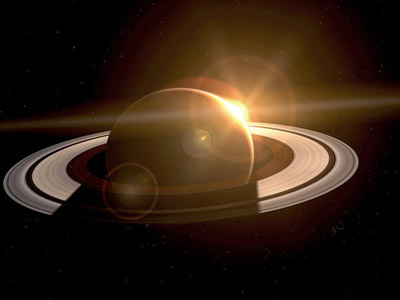
Uranus
The most unusual of all planets, Uranus is the seventh planet in the solar system from the Sun and is the only one named after a Greek God and not a Roman God (named after the Greek God of the sky, Ouranos). Located at almost 20 AU from the Sun, Uranus was also the first planet discovered through a telescope in the late 18th century.
Apart from Venus, Uranus is the only other planet in the solar system which rotates retrograde (east to west) and completes a sidereal day in 17 Earth hours. What makes Uranus unique is that it revolves around the Sun like a 'rolling ball' along a plane due its axial tilt being at almost 98 degrees. Owing to this unusual axial tilt, suffice it to say that the Uranian poles attract more sunlight than against its equatorial belt (the poles essentially being exposed to 42 years of continous sunglight and the equatorial regions encountering swift changes between night and day with the Sun near or even below the horizon).
The Uranian year lasts a little over 84 Earth years.
Like Neptune, Uranus is known as a 'ice giant' and is considered to have the coldest atmosphere among all planets - its atmosphere containing iced methane and ammonia.
Similar to Saturn, Uranus also has a ring system around it though it is nowhere as prominent.
Uranus has 27 confirmed natural satellites and of these, Titania's the biggest (though smaller than our Moon, it is the 8th largest satellite in the Solar Sytem).
Contrary to popular belief, Uranus has occasionally been visible to the naked eye (even prior to its official discovery) but was mistaken for a star due to its distance from the Sun and resultant faintness.
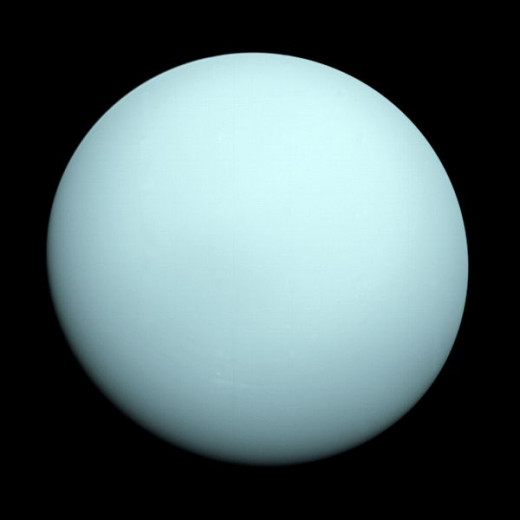
Neptune
Named after the Roman God of seas, Neptune is the 8th and furthest planet of the Solar System (at a distance of roughly 30 AU from the Sun). It is also one of the coldest and stormiest (with wind-speeds on its surface reaching until 2,100 km/hour).
Neptune's trademark blue hue can be attributed to the absorption of red light by its ammonia-rich icy atmosphere.
While Neptune's similar in size to Uranus, it is a lot more denser in mass and its atmosphere is a lot more active in comparison to its pale cyan-coloured 'ice-giant' neighbour.
Neptune rotates about its axis in roughly 16 hours (faster than Uranus) and revolves around the sun in a long and boring 164 Earth years.
A prominent feature on the Neptunian surface is the 'Great Dark Spot' (similar to Jupiter's Great Red Spot) - a permanent cyclonic storm in Neptune's southern hemisphere.
Neptune's confirmed to have 14 natural satellites (The most prominent of these being Triton - the only large satellite which rotates retrograde and the only one in the solar system which has a reasonably dense atmosphere).
Neptune is also surrounded by some minor planets known as Neptune-Trojans.
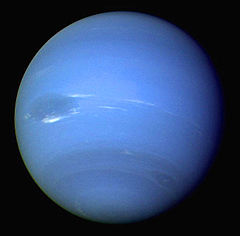
Pluto
Named after the Greek God of the Underworld and officially considered the ninth and furthest planet from the Sun until 2006, Pluto is now the first dwarf planet in what astronomers now call the still largely unexplored Trans-Neptunian belt (consisting mostly of the Kupier belt).
Situated at almost 40 Astronomical Units from the Sun, Pluto has an eccentric orbit and during the time it was classified a planet, its eccentricity actually made it come closer to the Sun as compared to Neptune, making Neptune the furthest planet in the solar system.
Pluto revolves around the Sun in 247 years and its sidereal day lasts a slow 6 Earth days.
Pluto has five natural satellites of which Charon is the largest and exhibits a 'binary' relationship with the dwarf planet.
The spacecraft 'New Horizons' is expected to fly around Pluto in 2015 and will supply humanity with brand new images of the Plutonian system.
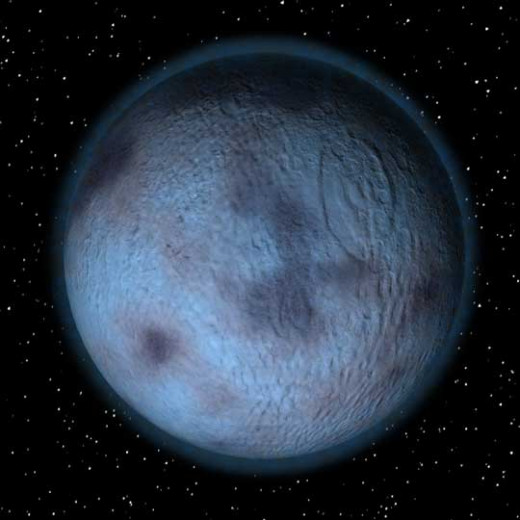
Haumea
The next dwarf planet in the trans-Neptunian belt after Pluto, Haumea is nearly 1/3rd of Pluto's size and probably the only one which has an 'elongated' shape.
Named after the Hawaiian Goddess of childbirth, the Haumean surface is thought to be largely made up of crystalline ice and organice compounds and during daylight hours, it is said it can get as bright as snow.
Haumea revolves around the sun in around 283 Earth years and is located at 51 A.U . from the Sun.
Haumea has two confirmed natural satellites (Hi'iaka and Namaka - Haumea's two daughters in Hawaiian mythology) which are also members of the larger group called the 'trans-Neptunian collisional family'.
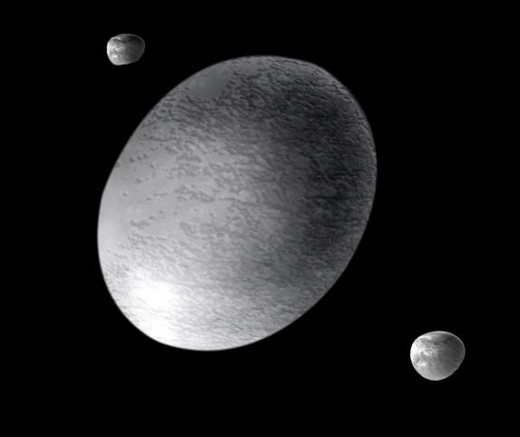
Makemake
Named after the God of humanity on Easter Island, Makemake is the 3rd dwarf planet in the Trans-Neptunian region and the biggest in the Kupier Belt.
While its size equates to almost 2/3rd of Pluto's, not much is known about Makemake except that its surface is likely to contain a lot of iced methane and ethane.
Empirical evidence also suggests it has no natural satellites and at the distance of nearly 52 A.U. from the sun, it completes a whole revolution around it in 310 Earth years while a sidereal day lasts roughly 7 Earth hours.
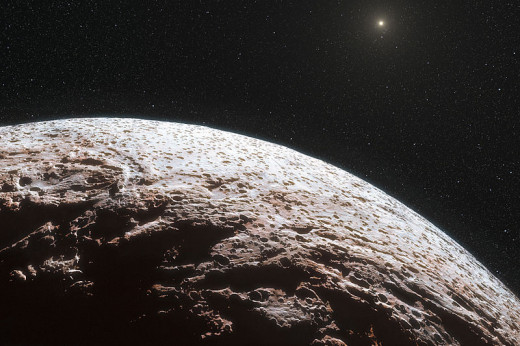
Eris
As of now, Eris and its moon Dysnomia are known to be the farthest dwarf planets in the Solar System, in a system called the 'scattered disc' which exists beyond the Kupier belt - they're situated roughly 97 times the Earth-Sun distance, from the Sun. It was discovered in 2005 and named after the Greek Goddess of discord and chaos.
Eris is now known to be 27% heavier than Pluto and at the time of its discovery, was almost classified as the Solar System's 10th planet before a 2006 redefinition of the term demoted Pluto down to a dwarf-planet status hence Eris had to share the same status.
Like the other outer dwarf planets Pluto, Makemake and Haumea; Eris is essentially made up of rock and ice.
The Eridian period of revolution around the Sun lasts almost 560 Earth Years while its sidereal day lasts roughly 25 hours.
The issue of whether Eris should be considered the new 9th planet of the Solar System (as its subjectively more massive than Pluto) is a matter of an ongoing debate among astronomers.
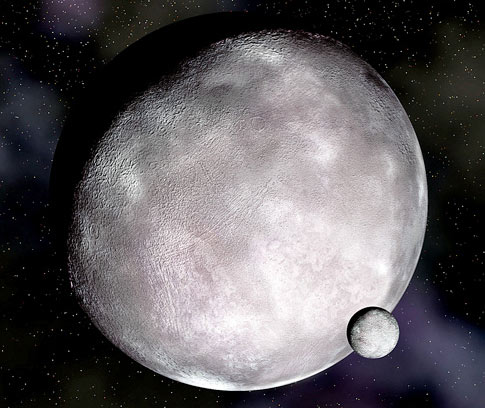
BEYOND THE SCATTERED DISC and FINAL THOUGHTS
Despite the discoveries of the new dwarf planets and comets and centaurs, the exact end of the solar system is still a matter of much debate as the exact end of the trans-Neptunian region has not been officially established.
Scientists have indeed come a long way over the past 50 years in concluding what we know the solar system as of now as against even my days in school and it is possible that more distant objects are likely to be continuously discovered - the Solar System might now actually be the tiny speck of dust in the Milky Way as we once thought it to be :)






